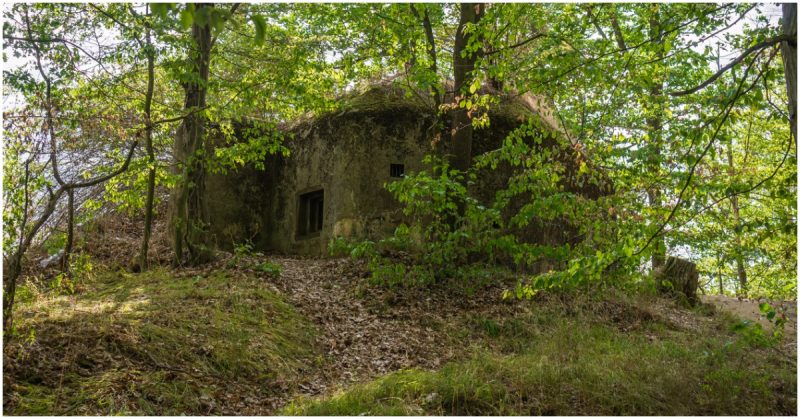Thomas Currie “Diver” Derrick wasn’t among the first to join the Australian military when WWII broke out in 1939. When he finally did join the following year, he was punished for leaving his ship to go sightseeing without permission. He was punished again for punching the soldier who teased him for that incident. Then he got in trouble for booking the military’s athletic events. And still they gave him a Victoria Cross.
Derrick got married on 24 June 1939. Using the fall of France as his excuse, he joined the military on 5 July 1940 – becoming a private with the 2/48th Battalion of the 26th Brigade. Though he enjoyed the military, the discipline was another thing entirely.
North Africa
By March the following year, he was in North Africa as part of the 9th Australian Division in Gazala, Libya. His unit was fortifying their position when the German Afrika Korps began heading their way. The British retreated to Egypt, so Derrick’s men were ordered back to Tobruk to cover them while making sure the Germans couldn’t use the port.
Up until January 1941, the Italians had held Tobruk till they were dislodged by Allied forces. Now the Germans wanted it back. In taking it, however, the RAF had damaged its few defenses which were still being repaired when Derrick’s unit got there on 9 April 1941.
So what they had were two lines of concrete bunkers some 8 to 9 miles from the port to keep artillery fire from damaging it. Just outside the city at the Bardia-El Adem road junction were a few barbed wire fences and a single anti-tank ditch that was only half finished. They worked feverishly to fix this perimeter but created another line some two miles behind it.
The day before Derrick’s team arrived, the Germans began enclosing the city. The 15th Panzer Division settled to the east, the 5th Light Division positioned itself to the south, while the 27the Infantry Division made its way to the west. The Mediterranean was now the only way out.
On April 10, the 231-day siege of the city began. As the German infantry approached the anti-tank ditch the next day, they were pushed back by the Australians. They had seen the ships the day before but had assumed it was to evacuate the Allied forces. They were wrong. What followed was all-out war by land, sea, and air.
Nor were those in the city trapped since Britain still ruled the waves. By December, some 47,280 men had been taken out from Tobruk, replaced by 34,113. Another 33,946 long tons of supplies were brought in, but at a cost of 34 ships destroyed and 33 damaged.
With this influx, the defenders were able to launch sorties. The Bardia Raid began late at night on April 19. Getting hold of an Italian Breda machine gun, Derrick led several attacks on German and Italian troops, receiving a commendation for his bravery and daring.
On April 29, the Axis stepped up their attack with increased artillery fire, starting the Battle of the Salient. At 8 PM the following day, they massed their tanks and artillery straight into the 26th Australian Brigade. Derrick was a section member in the left flank, but it did no good. They lost ground and had to retreat, but he was made a corporal for his conduct.
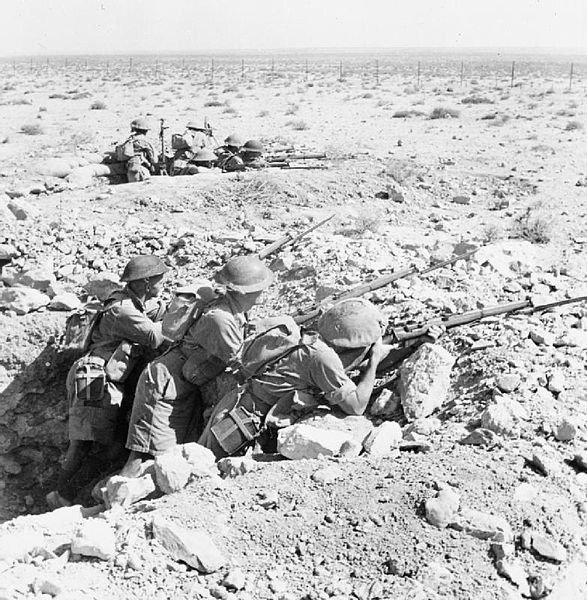
He showed his gratitude the following month by spotting and turning in a German posing as a British tank officer. They showed him theirs by making him a platoon sergeant in September and sending him to Egypt.
It was at the First Battle of Alamein that Derrick really shone. The British Eighth Army needed reinforcements, so they sent over the 2/48th Battalion. As part of the 26th Australian Brigade, Derrick led the attack on Tel el Elsa.
On 10 July 1942, he faced three German machine gun posts. Turning kamikaze, he ran at them while firing, taking out the gunners and diving into the German positions with his men behind him. The enemy surrendered (those who survived), allowing Derrick’s team to take over a hundred POWs back to camp.
The next evening the Germans retaliated by overrunning the Australian position with tanks, followed by their infantry. Using sticky bombs, Derrick destroyed two tanks and got a Distinguished Conduct Medal for it.
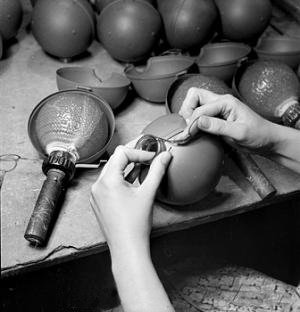
Made a sergeant on July 28, he led a reconnaissance team that located German machine gun positions for the Second Battle of El Alamein. When it began on October 23, he hopped on a gun carrier and knocked out three of them with a Thompson submachine gun. Those who saw him thought he’d get a Victoria Cross for that, but he didn’t.
South Pacific
So he tried again in 1943, this time in the South Pacific. Following the landings at and subsequient capture of Lae, the 9th Division was tasked to seize Finschhafen, clear the Huon Peninsula and gain control of the Vitiaz Strait. By 2 October, one of the division’s brigades had gained a foothold on Finschhafen, but soon encountered fierce Japanese resistance.
In response to a Japanese counter-attack, the 26th Brigade was transferred to reinforce the Australian position on 20 October. When the division switched to the offensive in November, the brigade was ordered to capture Sattelberg. Sattelberg was a densely wooded hill rising 1,000 metres (1,100 yd) and dominating the Finschhafen region; it was in an assault on this position that Derrick was to earn the Victoria Cross.
On the morning of November 24, two platoons attacked the summit but were beaten back, so Derrick tried a third that afternoon. He failed, so his superiors ordered him to retreat and try again the next day.
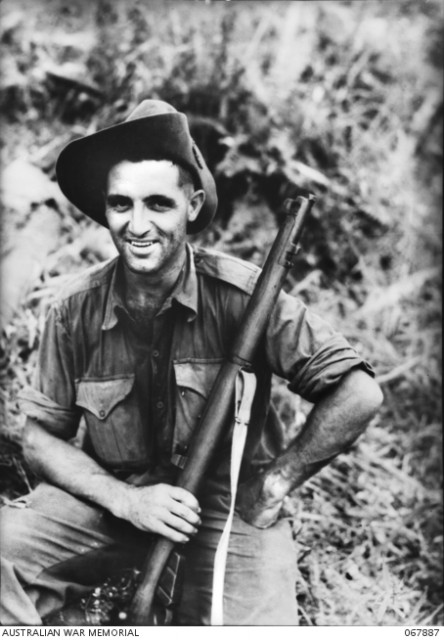
Derrick’s unit, 2/48th Battalion, had captured the Japanese airstrip at Mahalang on September 14, and he wasn’t impressed by them. As he always had had a problem with discipline, instead of obeying, he told his commanders that he was pinned down.
He wasn’t. While his men provided cover fire, he scaled the cliff and managed to chuck grenades into seven Japanese posts – all while under heavy fire, himself. Then he returned to camp, called on more men, and took out three more before calling it a night. They still hadn’t taken the peak, but they’d try again the next morning.
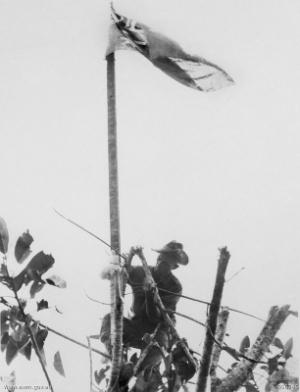
Taking out German machine gun posts and tanks in Egypt didn’t earn Derrick the Victoria Cross. It was taking out the Japanese in New Guinea that did.
They did, showering the summit with heavy artillery barrage to make way for the full attack. At 8:25 AM, a patrol was sent ahead, but they came back shaking their heads. The Japanese were gone.
They had apparently abandoned their posts shortly after Derrick’s grenade launching spree. He was therefore given the honor of raising the Australian flag above the hill.
Later War & Death
The 2/48th Battalion remained at Sattelberg until late December 1943, when it returned to the coast in order to regroup. On 7 February 1944, the battalion sailed from Finschhafen for Australia, disembarking at Brisbane.
On 20 August 1944, Derrick was posted to an officer cadet training unit in Victoria. He requested that he be allowed to rejoin the 2/48th Battalion at the end of the course; contrary to normal Army policy that prevented officers commissioned from the ranks from returning to their previous units. An exemption was granted to Derrick only after much lobbying.
On 1 May 1945, Derrick took part in the landing at Tarakan; an island off the coast of Borneo. Under the cover of a naval and aerial bombardment, he led his men ashore in the initial waves of the landing. Slowly pushing inland, the 2/48th Battalion’s main task from 19 May was to capture a heavily defended hill code-named Freda. On 22 May, Derrick’s was one of two platoons that attacked a well-defended knoll and captured the position. Derrick played a key role in this action, and coordinated both platoons during the final assault that afternoon.
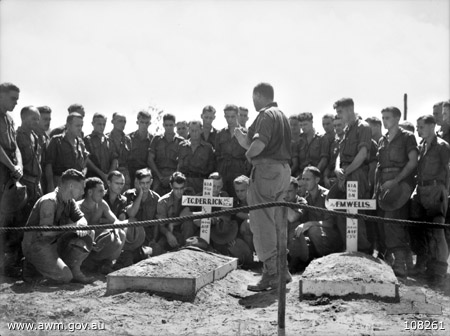
After capturing the knoll, the two platoons—reinforced by two sections of the 2/4th Commando Squadron—dug in to await an expected Japanese counter-attack. At about 03:30 on 23 May, a Japanese light machine gun fired into the Australian position. Derrick sat upright to see if his men were all right, and was hit by five bullets from the gun’s second burst; striking him from his left hip to the right of his chest. His runner, dragged him behind cover, but Derrick could not be immediately evacuated as Japanese troops attacked at about 04:00. Derrick was in great pain, and told Colby that he had “had it”. Despite his wounds, he continued to issue orders for several hours.
When stretcher bearers reached the position at dawn, Derrick insisted that the other wounded be attended to first. Derrick was carried off Freda later that morning. At the hospital, surgeons found that bullets had torn away much of Derrick’s liver; he died on 24 May 1945 during a second operation on his wounds.He was buried in the 2/48th Battalion’s cemetery on Tarakan that afternoon, and later re-interred at the Labuan War Cemetery, plot 24, row A, grave 9.
